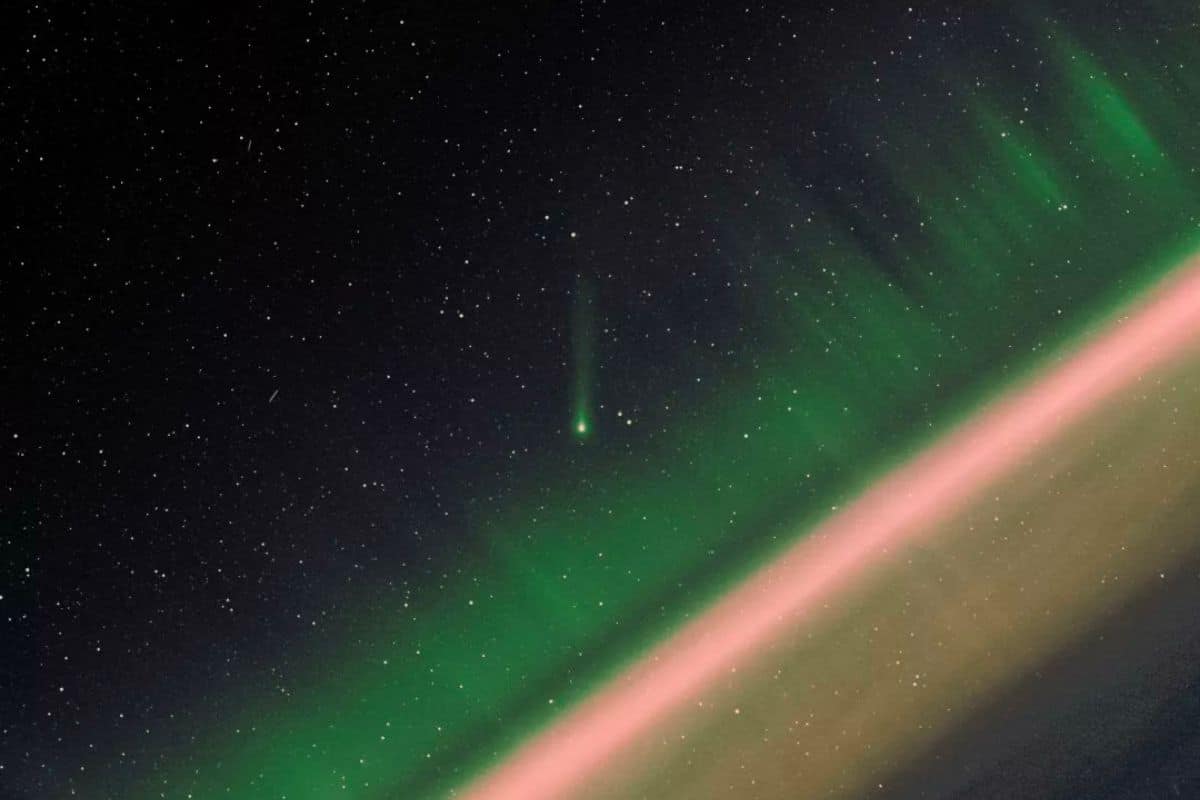

The comet flew about 35 million kilometers past the Earth around December 12 and is reaching perihelion today.
The perihelion is the point of the orbit of a comet — or any other object — closest to the sun. Although Earth’s orbit is circular, our planet is in perihelion around January 4. Then the sun appears slightly larger than average. Comet Leonard has a highly elliptical orbit, which means that the comet will return to the Kuiper Belt after visiting the inner solar system.
At present, comet C/2021 A1 is only 0.62 AU from the Sun, which is about 93 million kilometers. The distance between the comet and Earth has now increased to more than 137 million kilometers. The comet was visible with the naked eye at the beginning of December, but Leonard is no longer visible from the Benelux.
Comets are relatively small celestial bodies that whiz through our solar system. They are made up of ice, dust and small rocky particles and can sometimes have very crazy orbits around the sun. Comets often have a tail. When the ice ball comes close to the sun or another star, it heats up. The ice in the comet sublimes (evaporates) and rushes away from the surface. In doing so, it carries light dust and debris particles with it. This creates a dust tail and coma (dusty atmosphere) so characteristic of comets. Then the comets return to distant corners of our solar system. Did you know that scientists currently know 3775 comets?
Beautiful pictures of the comet have been taken in the past month. Below is a small selection of the most beautiful images of the celestial body. The first row of photos is especially impressive. You can clearly see that the tail grows as the comet gets closer to the sun.
The magnificent evolution of Comet Leonard imaged by Justin Tilbrook from Penwortham, South Australia.
December 2021 18 20 21 22 23 24 25 26 27 28 29 30. pic.twitter.com/eeobWjvL7z— Tel Lekatsas (@TelLekatsas) December 31, 2021

Rolando Ligustri (CARA Project, CAST) & Lukas Demetz
C/2021 A1 Leonard 2021 Dec 31 UT 19.10 two panel mosaic LRGB 8/8 min 8″/f-3 Veloce QHY600 Michael Jäger Lukas Demetz, Skygems Observatories pic.twitter.com/yZjLoKvGa1
— Michael Jäger (@Komet123Jager) January 1, 2022
Colorised version of an image of comet Leonard captured by Chinese space resources company Origin Space’s Yangwang-1 space telescope and featured by NASA’s Astronomy Picture of the Day [Origin Space]. https://t.co/MfSUadKl29 pic.twitter.com/ztFAssWSeR
— Andrew Jones (@AJ_FI) Dec 15, 2021
The “Christmas Comet” Leonard as it set in the Southwestern sky last night. It ended up putting on quite the show for us. Being so low on the horizon, it’s challenging to capture, but so worth it! #astrophotography #space #opteam pic.twitter.com/h7TAybFa65
— Andrew McCarthy (@AJamesMcCarthy) Dec 27, 2021
Source material:
“Comet C/2021 A1 (Leonard) in 2021/2022
” – Heaven.observing.com
Image at the top of this article: Zhuoxiao Wang, Yangwang-1 Space Telescope, Origin.Space